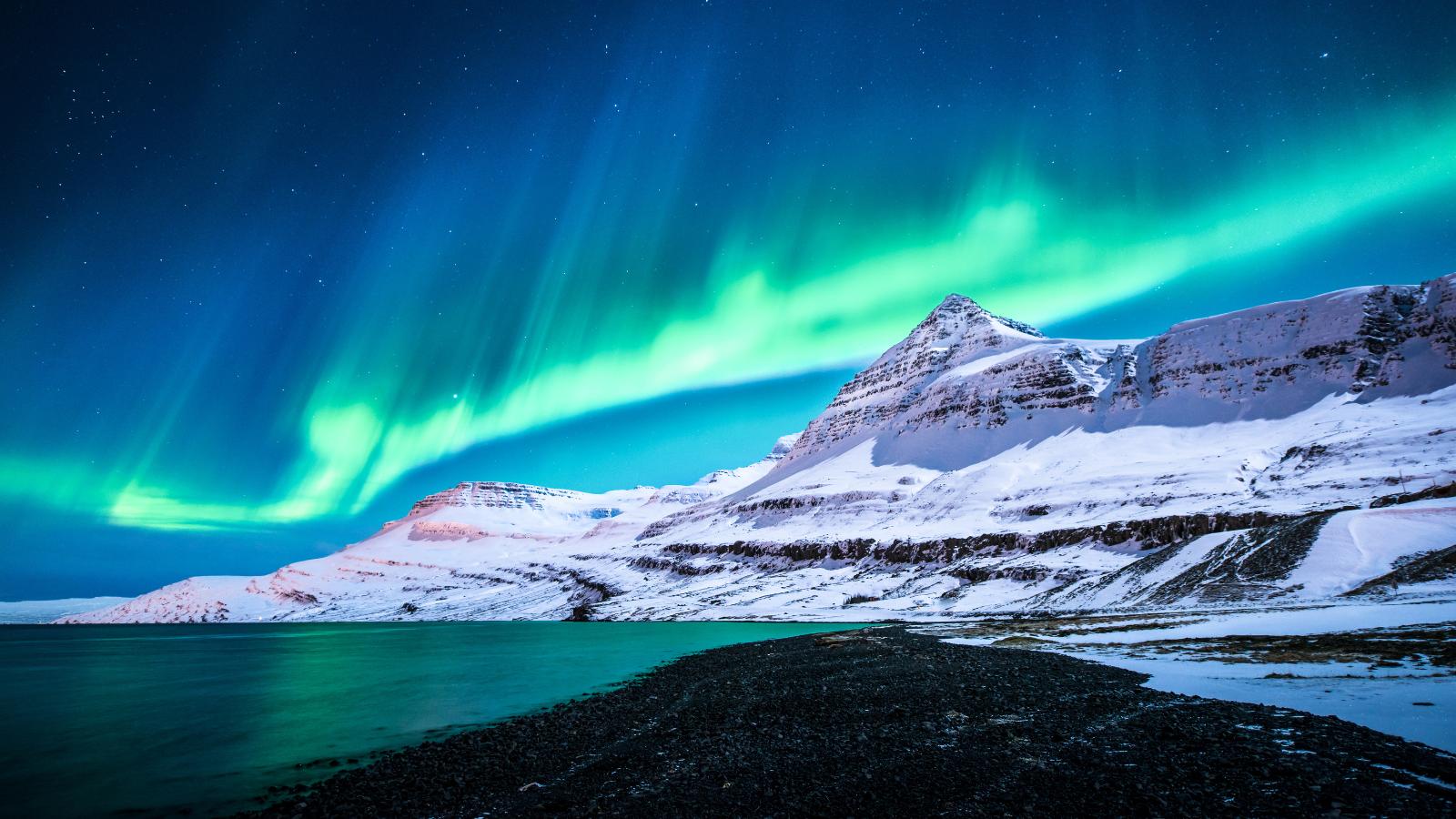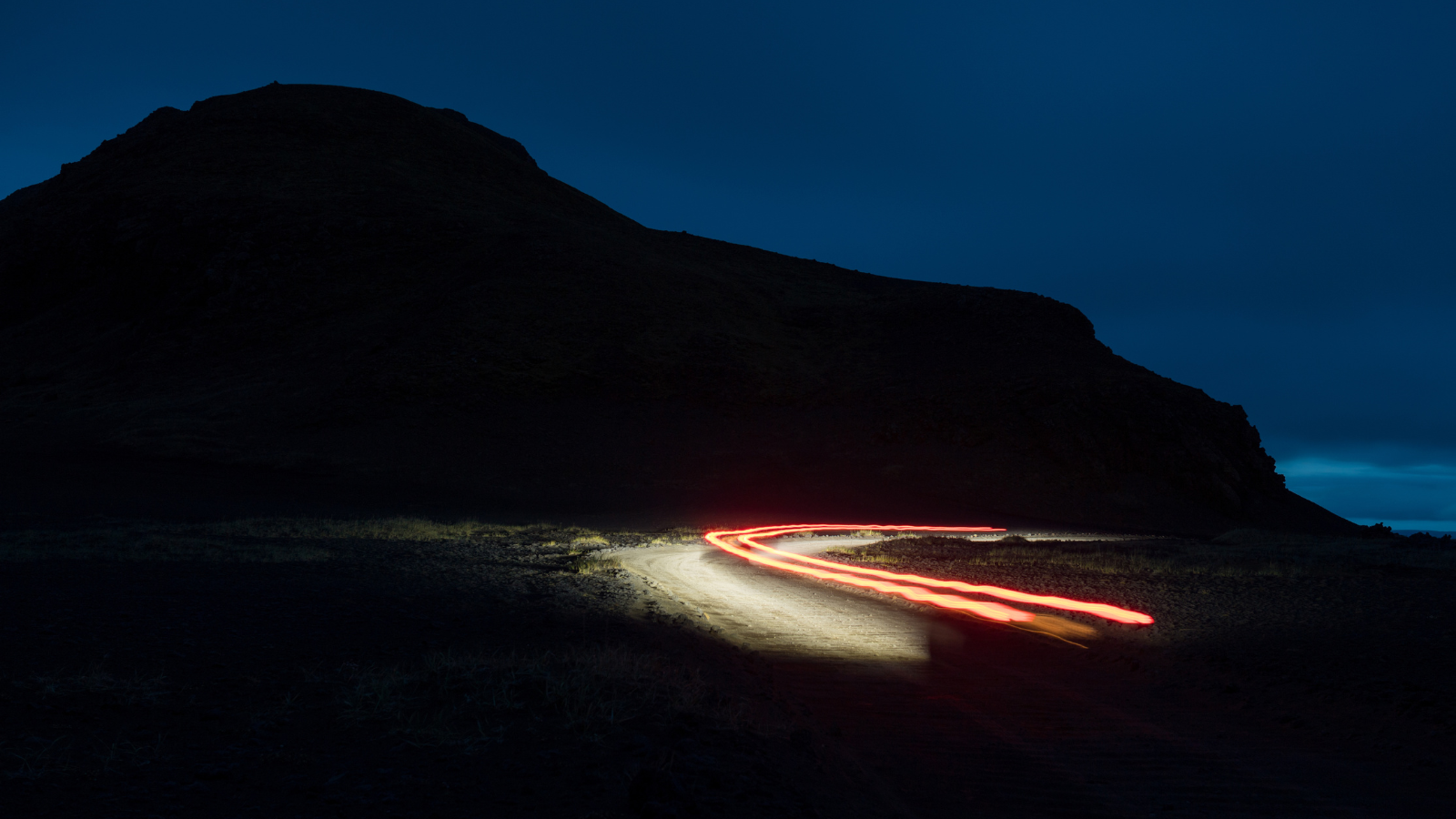Things to Know About Driving in Iceland at Night
Planning a trip to Iceland during the autumn, winter or spring? Then driving at night may have crossed your mind or even made it onto the agenda. But how safe is it? Driving in the dark, no matter where in the world you are, comes with its own risk; poor visibility, fatigue and glaring headlights. But, Iceland comes with the added challenge of cold and unpredictable weather. To help you prepare for it, we’ve compiled some important things to know.
1. It’s dark
This may seem completely obvious, but many visitors are struck by just how dark it is when driving in Iceland at night. There are very few street lamps even on the Ring Road. With long stretches between the towns, you will be completely reliant on your headlights to see where you are going. For long journeys at night, be prepared that it can get quite tiresome.
2. Roads can close
The darker months in Iceland bring with them wintery weather which can cause some roads to close. F-roads are the first to close. These are unpaved roads running toward the highlands which require experience and 4x4 to drive on. Usually, these roads are banned for hire cars as many include a river crossing.
Major roads, like the Ring Road, remain open all year round, however may experience temporary closures due to snow and other factors. To keep an eye on the road conditions and closures, you can find up-to-date information on the IRCA website.
3. It can feel disorientating
The pitch-dark and potentially snowy conditions can make driving in Iceland at night a disorientating experience. Visibility can be greatly reduced and the roads can be tricky to navigate. Make sure you stick to the speed limits and give yourself plenty of time to reach your destination.
4. 4x4’s are recommended
If you are planning to do a significant amount of driving at night on your trip to Iceland, then choosing a good car is highly recommended. The unpredictable nature of Iceland's weather can leave the road conditions snowy and icy. Having a car that can handle these conditions in case of an unpredicted snowstorm or freezing nightly temperatures is a good option if you're planning on driving in Iceland at night.
Discover 4x4 car rental with Reykjavik Rent a Car.
5. Slower than the speed limit is vital
With narrow shoulders and poor vision, driving at night in Iceland comes with more challenges than in the lighter summer months. The safest way to navigate the roads is by keeping to the speed limit, although this sometimes is too high for the traction on the road. By driving slower, you have more time to react to the obstacles on the roads.
6. It can get dark very quickly
Nightfall in Iceland during the winter comes quickly. The transition from daylight to pitch-black can happen earlier than expected. If the weather is cloudy or overcast this can cause it to get darker earlier in the day. With a mere 5 hours of daylight during the winter, plan well to avoid driving for long periods in the dark.
7. Be prepared to miss out on the scenery
One of the most attractive things about renting a car in Iceland and doing a self-drive tour is being able to enjoy the scenery and stop off at any attractions you pass. However, with night driving, you may not be able to see the rugged landscape that makes Iceland so popular and could pass some major attractions without even realising.

8. Northern Lights
Iceland’s darker months come with a light of their own: The Northern Lights. This incredible spectacle can appear during the winter months and is easiest to see when you are away from light pollution. This means if you're driving in rural Iceland at night, you may be given a front row ticket to the best light show. If this happens while driving at night, there are a few things to remember in order to keep yourself and your passengers safe.
- Do not stop the car on the road - if you want to stop, find an appropriate parking spot.
- Don’t pull off the road - it is illegal to drive off-road in Iceland as the ecosystem is fragile.
- Keep your eyes on the road - it’s vital to keep alert while driving as hazards can present themselves at any time.
9. Tarmac into Gravel
One of the most common accidents in Iceland happens on the sections of road that transition from tarmac to gravel. Iceland’s roads, including the ring road, can change from tarmac to gravel in the remote area. These sections are well signposted and a new speed limit is displayed. Accidents occur when drivers don’t slow down enough to make the transition between the road surfaces. When driving at night, it is important to slow down early to prepare for the change, as you may not see it until you are too close.
10. Weather is unpredictable
Even though this is previously mentioned, it is worth having its own point. The weather in Iceland is unpredictable. This means you should plan and prepare for the worst-case weather scenario. From sudden snow storms to thrashing winds, Iceland can quickly turn from a beautiful day into hazardous conditions. Top that with darkness, navigating the roads can be hard with very poor visibility.
Although we recommend avoiding driving at night, we know that this isn’t always possible, especially in the darker months. By finding out the main hazards and things to be aware of while driving in Iceland at night, you can make the experience easier for yourself.
If you’re looking for a rental car company, Reykjavik Car Rental has an extensive fleet of cars available to hire. From small cars to 4x4s, you’ll find the perfect car for your time in Iceland.
